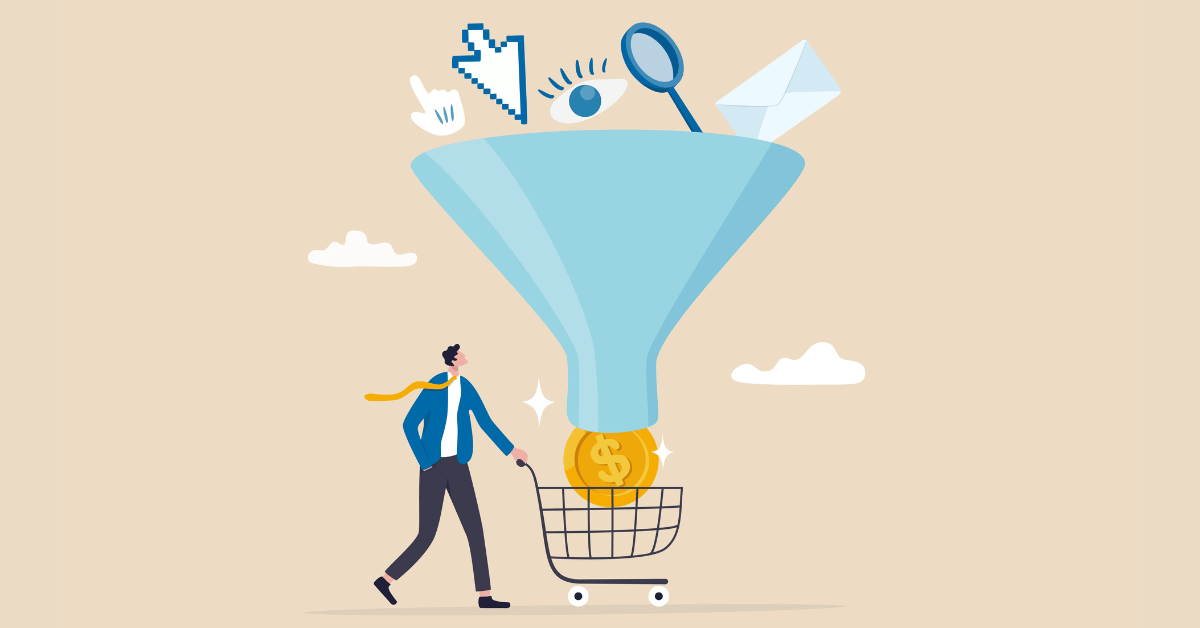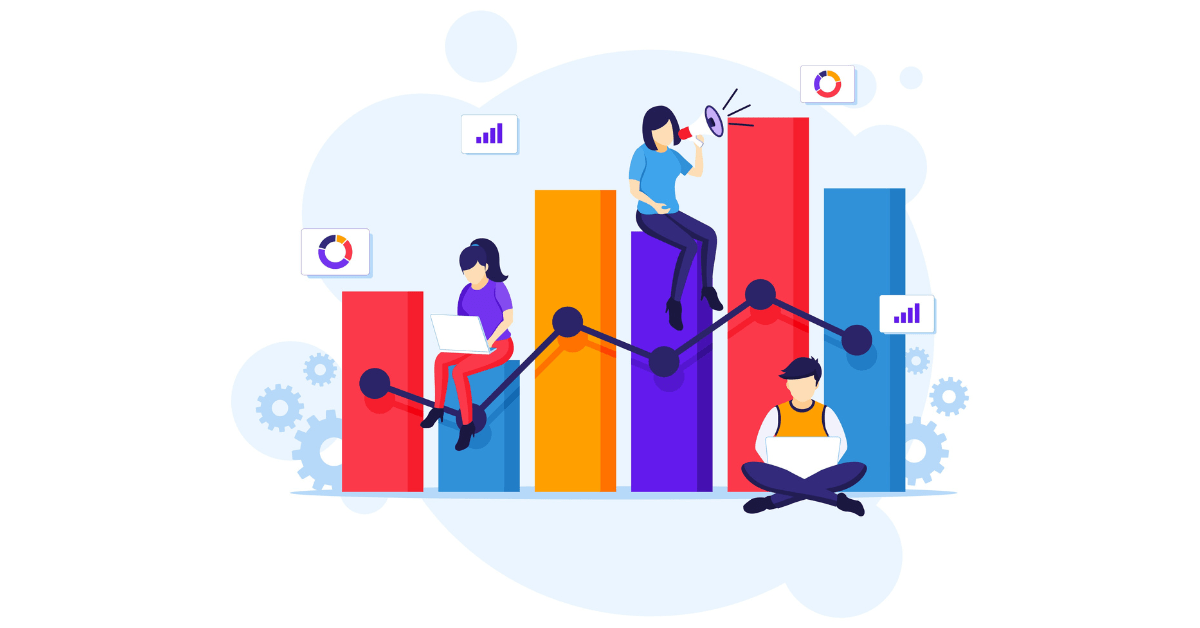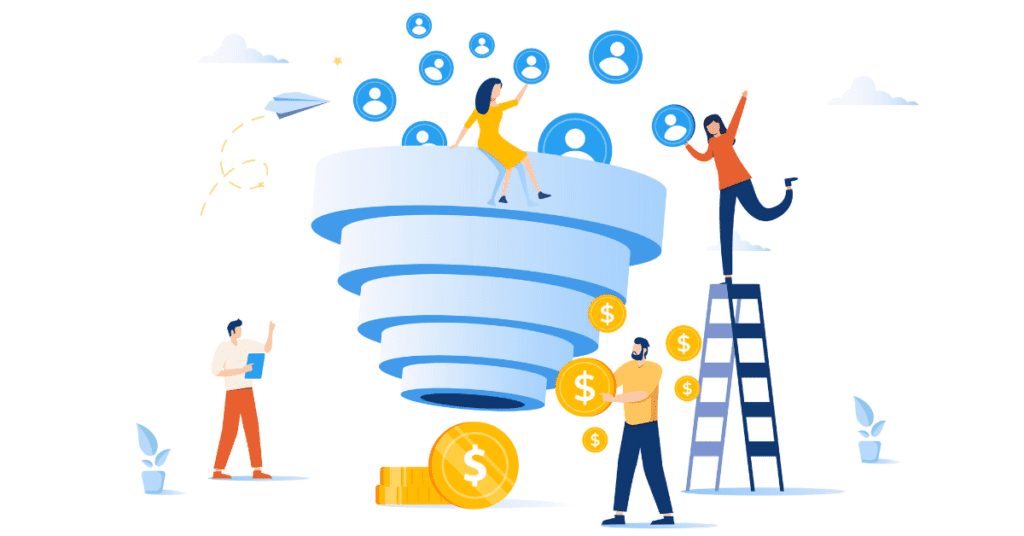Welcome to my “Blueprint to Crafting Irresistible Sales Funnels” where I’ll demystify the concept of a sales funnel and guide you on the process of creating a successful sales funnel for automated sales and lead generation.
Ever heard of a “sales funnel” and wondered what all the fuss was about? Or perhaps, you’re looking for ways to make more sales and attract leads like bees to honey, but aren’t sure where to start?
Well, you’re in the right place! Sales funnels are a game-changer in the world of marketing. They are strategic systems designed to attract, engage, and convert potential customers into actual buyers.
And guess what? They work like magic! (When put together properly). This crucial tool can skyrocket your lead generation, automate your sales process, and ultimately drive your business growth.
By the end of this article, you’ll have a firm grasp on the creation and optimization of a sales funnel that will drive massive leads and sales to your business. Ready to dive in? Let’s go!
Introduction: What is a Sales Funnel and Why is it Important?
Understanding the Sales Funnel
The term Sales Funnel might seem confusing at first, but it is simply a strategy that helps you visualize the customer journey from the initial awareness stage to the eventual purchase.
Think of it as a funnel, where a large number of potential customers enter at the top, and over time, you nurture and refine them into paying customers who exit at the bottom of the funnel.

Why is a Sales Funnel important?
A well-crafted sales funnel does more than just lead a prospect from point A to point B. It strategically guides potential customers through your products or services, nurturing them and addressing their concerns along the way.
This process helps build trust and rapport, which is crucial in converting a potential lead into a paying customer.
Moreover, a functional sales funnel will help you track, analyze, and understand customer behavior, enabling you to fine-tune your marketing strategies for optimal results.
Wondering how to apply other digital marketing techniques? This simple guide for business owners and entrepreneurs will teach you how in simple steps.
Understanding Your Target Audience: The Key to a Successful Sales Funnel
Before you can even begin to construct a successful sales funnel, you must first understand your target audience.
Just as a well-prepared chef knows his dishes will succeed if he understands the tastes of his customers, a good marketer knows the key to their success lies in the deep understanding of their target audience and their needs.
Let’s explore this idea further.
Know Your Audience
The first step to understanding your target audience is to know who they are. You need to identify their demographics, psychographics, and behavior. This includes information such as age, gender, income, location, values, attitudes, interests, and lifestyle.
To ensure that your sales funnel will effectively generate leads and sales, it’s essential to tailor it to your audience’s unique traits and preferences.
By truly understanding your prospective customers, you can craft a marketing strategy that speaks directly to them, thus increasing your chances of turning them into customers or leads.
Remember, a one-size-fits-all approach rarely works in sales; personalization is key.
The key to successful lead generation is to create content that is valuable to your target audience.
– Brian Clark
Designing a Landing Page that Converts: The Anatomy of a High-Converting Page

High-converting landing pages are fundamental for effective lead generation.
In the digital marketing world, a well-structured landing page could serve as the keystone to your success. It’s where potential leads are converted into profitable customers. But what’s the secret sauce behind a landing page that converts?
Let’s delve into the anatomy of a high-converting page.
1. Clear and Compelling Headline
The headline is the first thing your potential leads will see. It’s your golden opportunity to capture their interest and entice them to stick around. Make your headline clear, concise, and compelling, offering a glimpse of what your product or service can do for them.
2. Engaging Subheadline
Think of your subheadline as an extension of your headline. It should supplement the headline by providing additional details, explaining what your offer is and why it’s valuable. It should stir curiosity and push the visitor to keep reading.
3. Persuasive Call-to-Action (CTA)
Your CTA is arguably the most critical part of your landing page. It’s the ‘action’ you want your visitors to take. Make it compelling and use persuasive text. Whether it’s “Buy Now,” “Sign Up,” or “Download,” ensure your CTA stands out and is easy to find.
4. Appealing Visuals
Humans are visual creatures. An eye-catching image or a short, engaging video can work wonders to attract attention. Ensure your visuals are relevant and high quality. They should support your message and engage the visitor.
5. Trust Indicators
Trust indicators like testimonials, reviews, and social proof can do a great deal to instill confidence in your visitors. They show that others have benefited from your offer, providing a sense of reassurance.
6. Clean Design
A clutter-free, easy-to-navigate landing page enhances the user experience. Ensure your design is clean and simple, with a clear path leading visitors to your CTA. Avoid unnecessary distractions that could divert their attention from your offer.
The purpose of your landing page is to convert visitors into leads. Each element must work in sync to guide your visitor towards the action you want them to take. It should offer value, create trust, and encourage action.
In summary, a high-converting landing page is a combination of engaging copy, compelling visuals, and a persuasive CTA, all wrapped up in a clean, user-friendly design. By adhering to these guidelines, you can design a landing page that doesn’t just attract leads, but converts them into paying customers.
Ready to build your funnels? You can learn more about the 9 must-have elements for your sales funnels to design captivating sales funnels!
Nurturing Your Leads: Tips and Tricks for Building Relationships with Prospects

Building relationships with your prospects is an essential part of any sales funnel. This process, known as lead nurturing, can significantly increase your conversion rates.
Here you can learn the tips and tricks on how to effectively nurture your leads and forge a meaningful connection with your prospects.
| Method | Benefits |
|---|---|
| Understanding Your Leads | Understand your leads to build a strong relationship. Know their needs and interests, and address these in your communication. This enhances engagement. |
| Consistent Communication | Regular communication with your leads is vital. Stay in their minds by using emails, social media or personalized content. |
| Customized Content | Customized content such as blog posts, ebooks, or special offers can help nurture leads effectively. Personalized content makes your leads feel valued. |
| Establishing Trust | Trust is crucial in relationships. Be real, clear, and dependable. Make sure your leads trust your brand and promises. Maintain trust by fulfilling promises and offering high-quality products or services. |
| Measure and Adjust | Track your lead nurturing progress using analytics. It’s okay to modify strategies if they aren’t effective. Lead nurturing is an ongoing process that can be adjusted and enhanced over time. |
In other words, nurturing your leads isn’t just about selling. It’s about building a relationship based on trust and understanding.
By following these tips and tricks, you will not only create a successful sales funnel but also forge a lasting connection with your prospects.
Fact: Nurtured leads make 47% larger purchases than non-nurtured leads
Measuring Success: How to Track Your Sales Funnel’s Performance and Optimize for Growth

Understanding how to measure the success of your sales funnel is crucial for growth. It’s not enough just to set up a sales funnel and hope for the best; you need to know whether it’s working or not.
This knowledge allows you to make informed decisions about what to tweak, what to get rid of, and what to do more of. Let’s delve into how you can track your sales funnel’s performance and optimize it for growth.
Setting Up Key Performance Indicators (KPIs)
Key Performance Indicators (KPIs) are measurable values that demonstrate how effectively your business is achieving its objectives.
For your sales funnel, these could include metrics such as the number of leads generated, the conversion rate at each stage, and the overall sales revenue. It’s essential to set up KPIs that are relevant to your business goals and to review them regularly.
Tracking Your KPIs
Once your KPIs are established, you need a way to track them. This is where analytics tools come into play. Google Analytics, for example, is a free and powerful and free tool that can help you track your website traffic and conversions.
If you’d like to learn more about Google Analytics, take advantage of the free resources provided by Google Analytics Academy.
Other tools like HubSpot and Salesforce can provide more detailed insights into your leads and customers.
Choosing and Utilizing an Analytics Tool
With a myriad of options available, selecting the right analytics tool for your business can seem like a daunting task.
Here’s one free tool to make it easier: Looker Studio (previously known as Google Data Studio). This free tool along with Google Analytics will keep track of your most important KPIs.
You can also leverage this tool to create comprehensive reports and inform your data-driven decision making process with visually compelling graphs.
The Benefits of Automation: Streamlining Your Sales Funnel for Maximum Efficiency

Automation plays a pivotal role in streamlining your sales funnel and enhancing its efficiency. By automating tasks, you can not only save time and resources but also ensure consistency and accuracy in your sales efforts.
Let’s delve into the major advantages of automating your sales funnel:
| Benefit | How? |
|---|---|
| Efficiency and Productivity | Automation boosts sales efficiency by minimizing repetitive tasks, thus freeing up your team to focus on lead nurturing and deal closure. It automates lead follow-ups, saving time for productivity and improving team performance. |
| Improved Customer Experience | Automating sales boosts customer experience by providing timely follow-ups and reminders, encouraging engagement and trust in your brand. |
| Data Collection and Analysis | Automation of the sales funnel enables data gathering and analysis. It helps track lead actions for insights into customer habits. This can aid in refining the sales process and boosting conversion rates. |
| Scalability | Automation aids business scalability by managing increased leads effectively. Unlike manual methods, it ensures timely personalized communication for each lead, maintaining quality and customer satisfaction during growth. |
This resource is available to you free of charge forever. Create an account and start your journey!
How Can You Automate Your Sales Funnel?
Automation is the secret ingredient that supercharges your sales funnel. It’s not only about streamlining processes and saving time but also about enhancing lead nurturing and increasing conversion rates.
Here are a couple of ways you can automate your sales funnel effectively.
| Method | Benefits |
|---|---|
| Email Automation | Consistent, targeted messages guiding leads through sales funnel stages |
| CRM Integration | Keeps everything organized and updated, freeing you for customer interaction |
| Chatbots | Interacts with prospective customers, answers FAQs, and schedules appointments |
| Social Media Automation | Maintains audience engagement on various platforms, enabling deeper interaction |
Would you like to set up your own sales funnels automation for free? Here is one FOREVER FREE tool for you.
Final Thoughts
So, you’ve made it to the end of this beginner’s guide, hopefully with a little more in-depth knowledge about sales funnels and their critical role in crafting successful marketing strategies.
One key takeaway here is the undeniable importance of knowing your target audience like the back of your hand. Why? Because once you understand who they are, you can tailor your funnel to create personalized experiences that they’ll love.
Another crucial point we’ve touched upon is the art of designing landing pages that convert like a dream and nurturing leads with care. These are the heart and soul of your sales funnel, so mastering these components is a must.
But it doesn’t stop there. This guide has also underscored the importance of keeping a pulse on your funnel’s performance by leveraging Key Performance Indicators (KPIs). And let’s not forget the magic of automation, which can skyrocket your efficiency and scalability to new heights.
Armed with these insights, you’re more than ready to build your own high-performing sales funnels. These tools will help you cultivate meaningful customer relationships and propel your business growth at a pace you never thought possible. Get ready to create your own highly-converting sales funnel!
Are you ready to start crafting irresistible sales funnels?
Let me know your questions in the comments below or what else you’d like to learn about.
Ready to learn more about sales funnels? Here you can learn about the 9 must-have elements for your sales funnels.

